According to the draft guidelines, the pilot program will start from December 2025 and last until May 2026 at a number of selected schools. After this period, the Ministry of Education and Training will summarize, evaluate and finalize the content framework for mass implementation in the following school years.
Few computers, many students
Ms. Pham Thi Xuan, Principal of Dao San Primary Boarding School ( Lai Chau ), said that teachers in the school have been approaching AI applications for several years now. This school year, for the first time, it has been officially deployed in teaching. The teaching staff proactively learns and trains, so they meet the requirements quite well, only a small number of older teachers are still confused when approaching new technology.
However, the biggest difficulty belongs to students, children in remote areas, many of whom are still struggling with Vietnamese, which is their second language.
"AI helps students understand lessons more easily and engage them more. Many first and second graders who were previously shy about communicating are now more confident thanks to visual lessons," Ms. Pham Thi Xuan shared.
However, the application can only take place within the school framework. At home, the ability to continue learning is almost zero: no computer, no stable internet, no study space.
Even in schools, there is a serious shortage of equipment: the central campus has only 25 computers while the classrooms are crowded with nearly 40 students. In more remote schools, there are only 18 computers for hundreds of students. Everyone understands that the ideal of "one computer per student" is still far away.

Education and training work in ethnic minority and mountainous areas has achieved important results in recent times. Photo: Nguyen Hien
Teacher Bui Thi Ai Mai, Tan Hiep Primary School (Binh Thanh Commune, Tay Ninh Province) shared: "If city children have early access to technology, children in border areas should be given the opportunity to study so as not to be disadvantaged and have a large gap compared to their peers."
However, looking at the reality at the school of the combined classes, teacher Ai Mai said: "Differentiating content alone is difficult, now if we want to bring AI in, there are almost no support tools. The school does not have a projector, TV or computer room, so when we need to experience AI, the whole class can only revolve around the teacher's personal laptop."
Building a flexible, relevant AI education framework
Speaking to the Vietnam Women's Newspaper, Dr. Nguyen Ha Huy Cuong, Director of the SDC Software Development Center (University of Danang) commented: "The pilot integration of artificial intelligence (AI) content into the general education program from grades 1 to 12 is a timely step, with strategic vision, an important foundation for the digital human resources ecosystem. Because AI is shaping an area of life such as in production, healthcare, agriculture, service types... Therefore, equipping students with knowledge not only helps them be proactive and master technology but also forms thinking, problem-solving capacity and adaptability in the future."
However, to achieve the above goal, Dr. Nguyen Ha Huy Cuong said that the most important thing is to invest in information technology infrastructure according to the latest technologies today. At the same time, it is necessary to coordinate and closely link between the high school program and the university training program to avoid duplication in the training program.
Regarding the AI education framework in the general education program, Dr. Nguyen Ha Huy Cuong said: "We should focus on applications, not on academics. Because high school students do not have enough knowledge and skills to access academic knowledge."
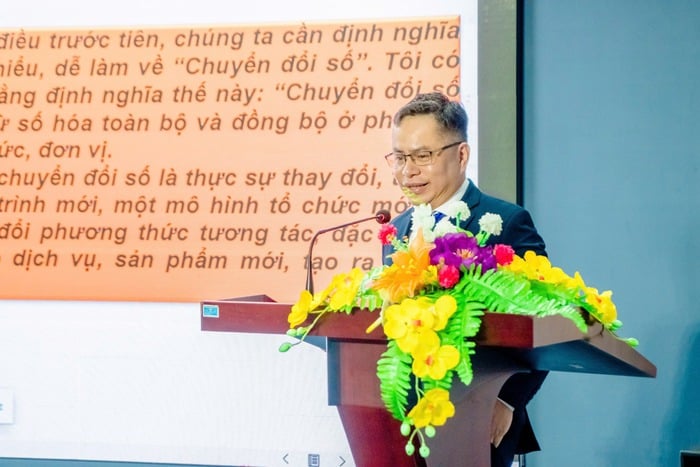
Dr. Nguyen Ha Huy Cuong, Director of SDC Software Development Center (University of Danang)
In addition, Dr. Nguyen Ha Huy Cuong said that the pilot at a number of selected schools needs to be noted. "The schools selected for the pilot must ensure diversity so that the Ministry of Education and Training has sufficient data for comparison, multi-dimensional assessment, and the content framework for mass implementation will be close to reality and appropriate."
Dr. Nguyen Ha Huy Cuong proposed that the Ministry of Education and Training should select 3 groups of schools to pilot this policy.
The first is the group of schools with favorable conditions. This is a group of schools concentrated in urban areas, where there are facilities, information technology infrastructure, and a team of teachers who can quickly access new technology.
The second group is schools in rural and suburban areas. This group of schools is assessed to have average facilities and information technology infrastructure. The curriculum development in this group of schools cannot be the same as the first group of schools.
In particular, group three is a group of schools with special difficulties. This group includes schools in remote, border, and island areas - with limited facilities, information technology infrastructure, etc.
The Ministry of Education and Training cannot build the same curriculum as the two groups of schools above. The curriculum needs to be built in accordance with actual conditions. For this group of schools, support is needed in terms of transmission infrastructure (internet) as well as information technology infrastructure (computers, learning software systems, etc.), Dr. Nguyen Ha Huy Cuong emphasized.
Removing geographical and time barriers
Dr. Nguyen Ha Huy Cuong said that digital technology helps remove geographical and time barriers, creating conditions for people to learn anytime, anywhere. The development of digital learning materials, open learning resources (OER) and online learning platforms encourages the spirit of lifelong learning, expanding the treasure trove of knowledge to all learners.
"Digital transformation is not only a goal but also an important tool to promote the development of the education sector. Educational institutions, especially universities, need to be proactive in building a digital transformation strategy, from infrastructure to people, to meet the requirements of the new era," Dr. Nguyen Ha Huy Cuong shared.
Regarding human resources, Dr. Huy Cuong believes that higher education institutions have a role in contributing and building human resources for the education sector, participating in training talented and virtuous people to serve and solve problems in the field of education and other socio-economic fields.
"I think this is the 'golden' period of Informatization, the mark is very big. The education sector needs to place orders with universities, centers, and research institutes on technology transfer research; research on applying new technology, core technology in building and developing solutions. Therefore, consulting products and practical implementation are always highly appreciated by society", Dr. Huy Cuong expressed.
AI educational content framework developed based on 4 circuits
Elementary Level (Introduction): Students recognize AI through visual applications (image and voice recognition), understand that AI is created by humans, and initially form awareness of protecting personal data.
Secondary School (Basic Knowledge): Understand how it works (data, algorithms), practice using AI tools to solve learning problems, and identify AI risks and biases.
High School Level (Creation and Career Orientation): Students design simple AI systems, develop complex problem-solving thinking, and orient themselves toward careers in technology.
At the same time, according to Dr. Huy Cuong, regarding training and fostering, the center always builds training and fostering programs in an in-depth and highly specialized direction at many levels from basic to advanced. Therefore, it has also contributed to training many teams of quality human resources to meet the needs of businesses.
Dr. Nguyen Ha Huy Cuong, the key issue to create success in digital transformation in education and educational institutions is financial resources, because when implementing digital problems, it is necessary to rely on core technologies such as: Cloud computing; Big data; Artificial intelligence and Internet of things, which require a lot of investment costs. Along with that is human resources, because for digital transformation, the human factor is very important.
Currently, the demand for experts in the field of technology, especially high technology and semiconductor technology, is not sufficient in both quantity and quality. Therefore, focusing on training experts is extremely urgent.
Source: https://phunuvietnam.vn/thi-diem-ai-trong-truong-hoc-co-hoi-lon-va-noi-lo-thieu-may-tinh-nghen-mang-20251125094858251.htm





















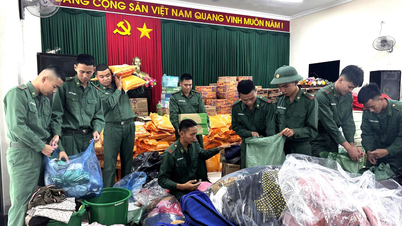





















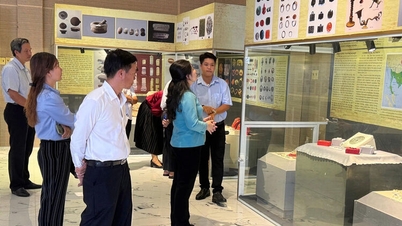













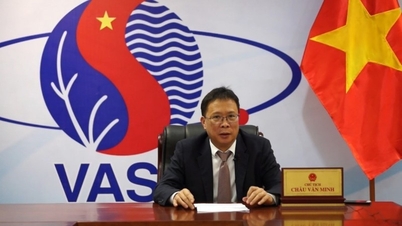


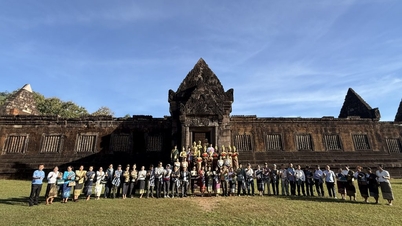



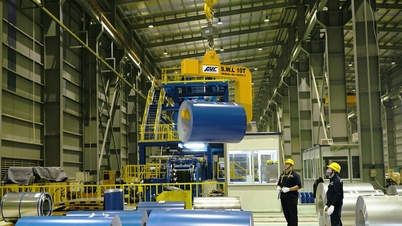












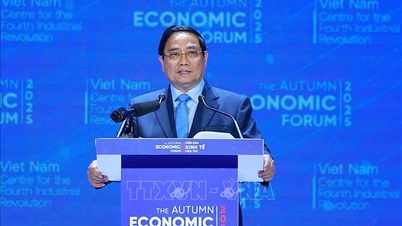


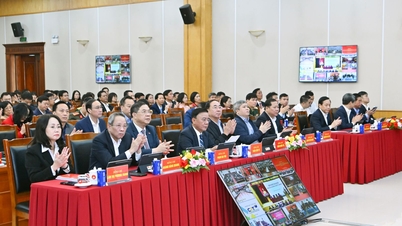

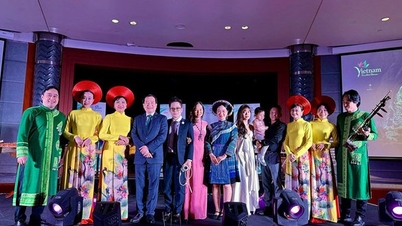
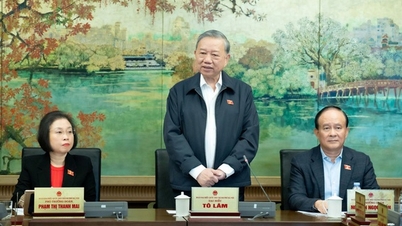



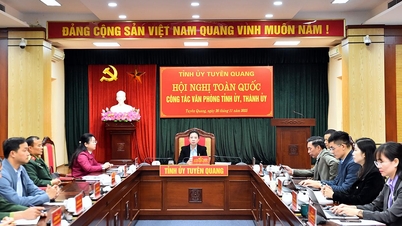



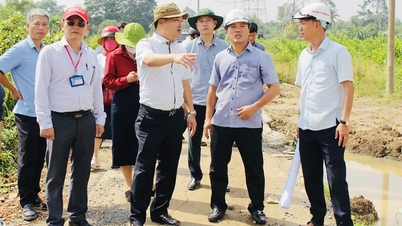


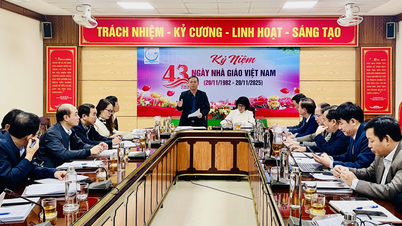
















Comment (0)